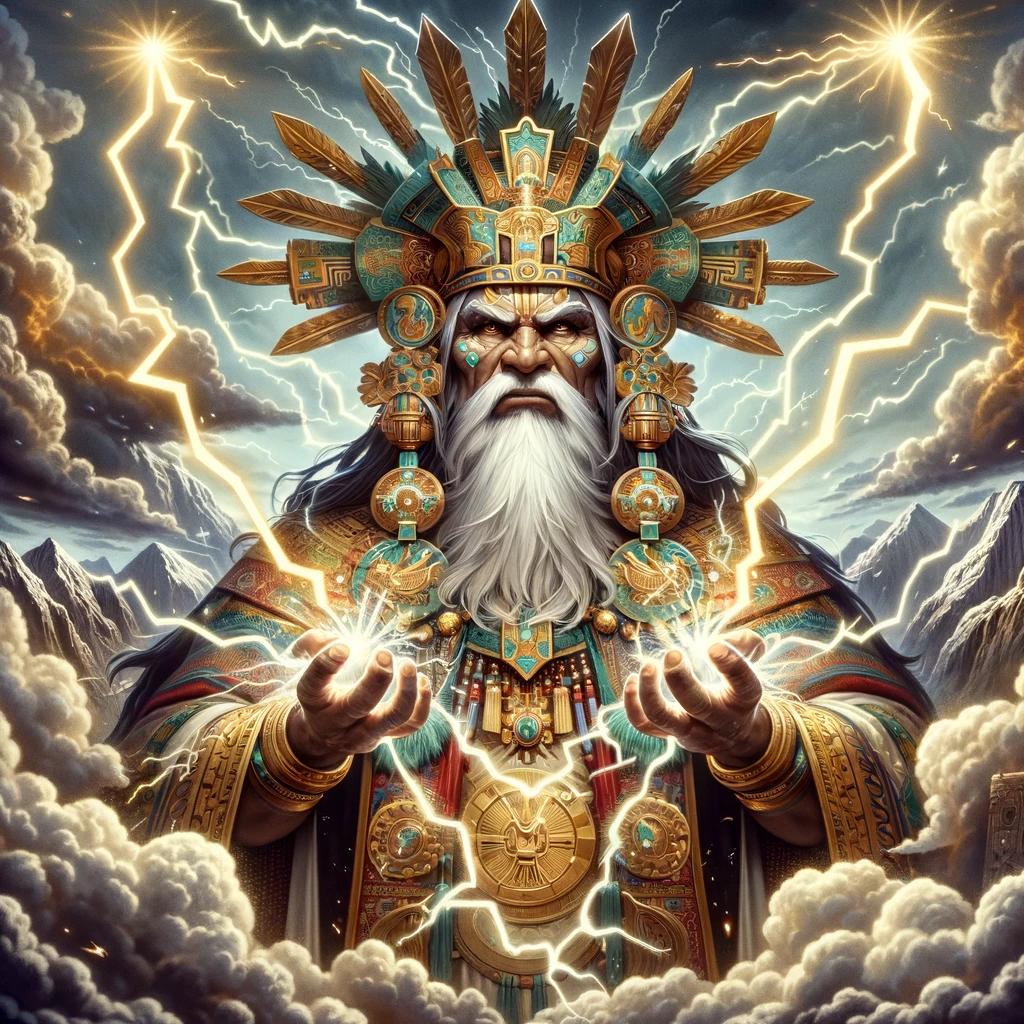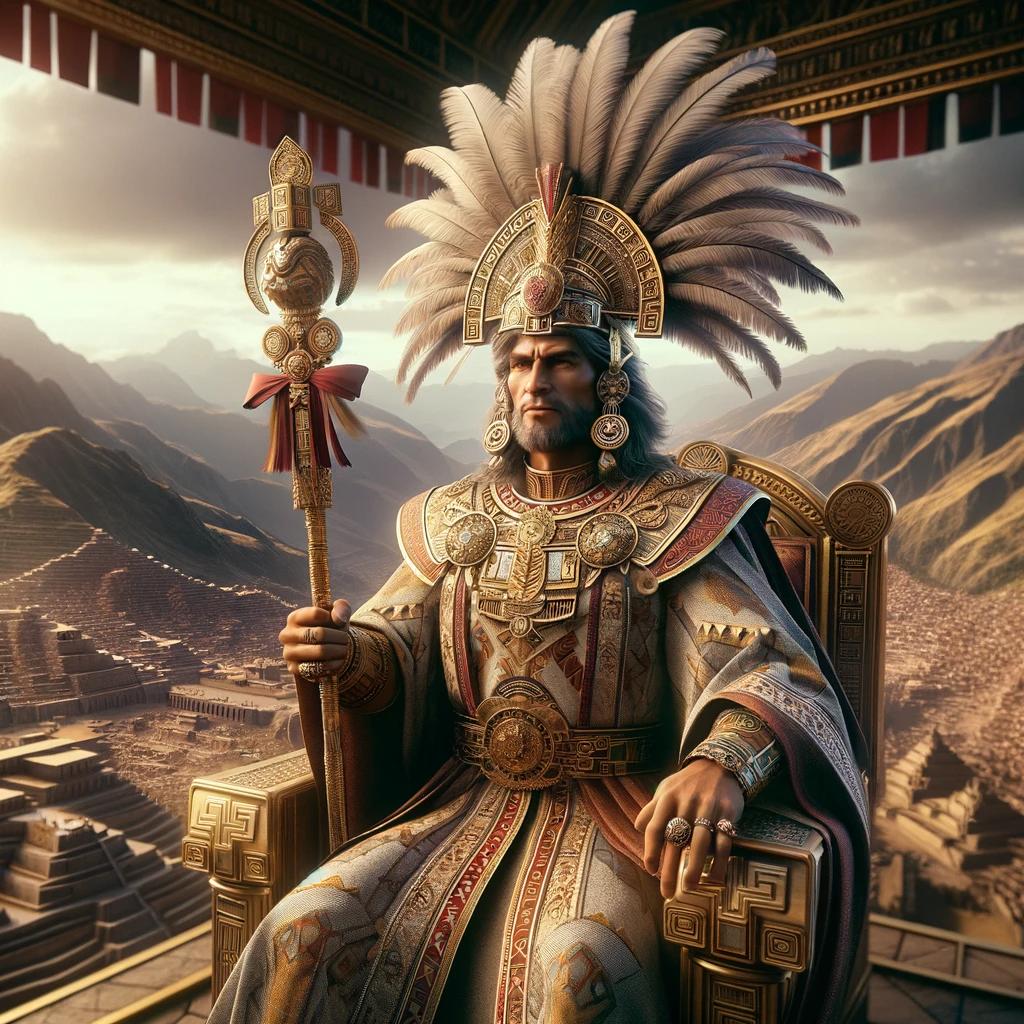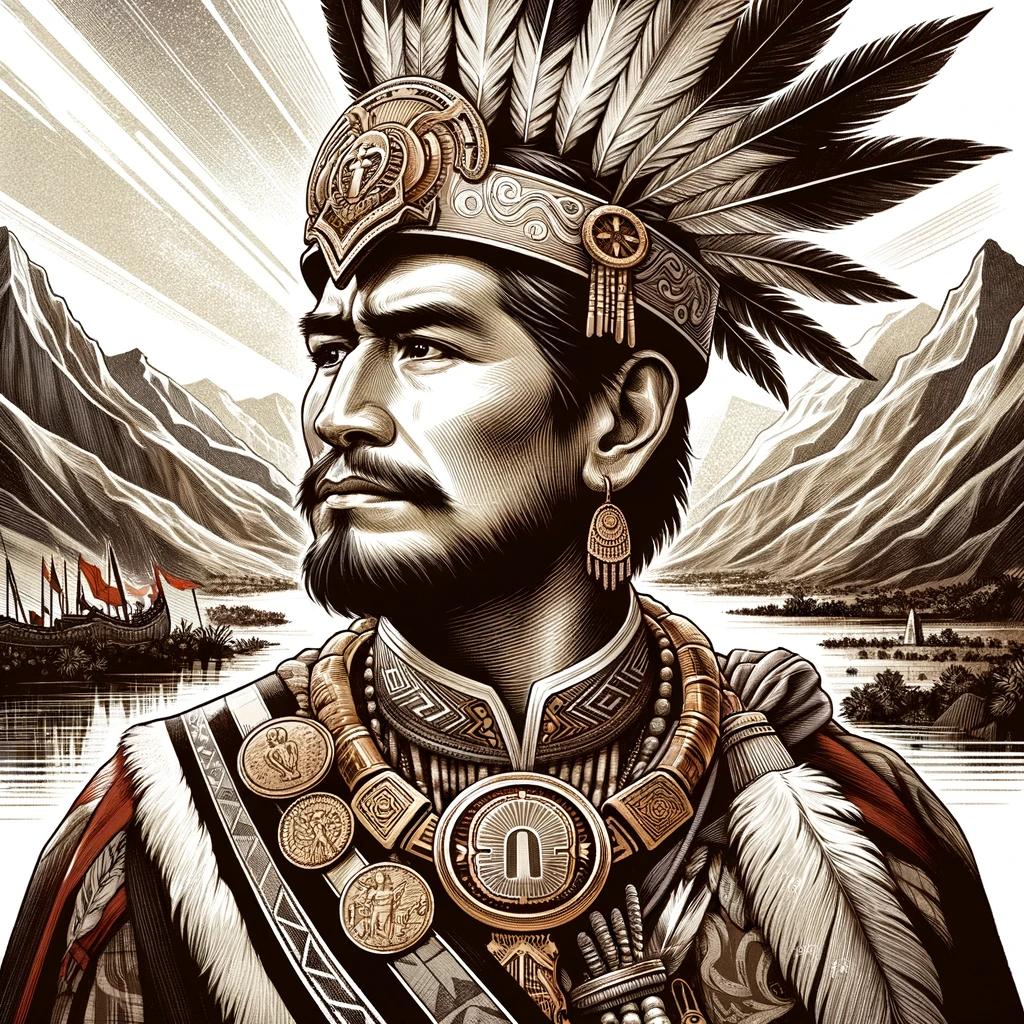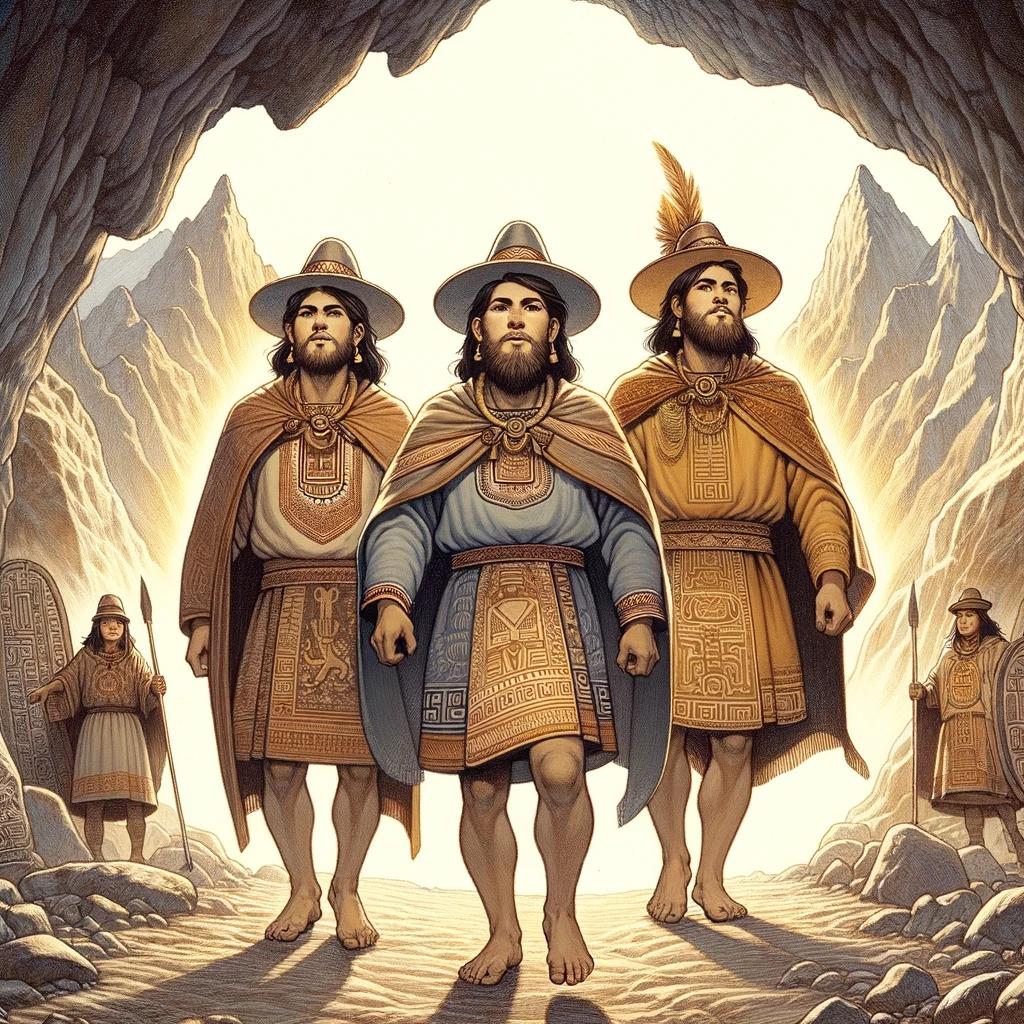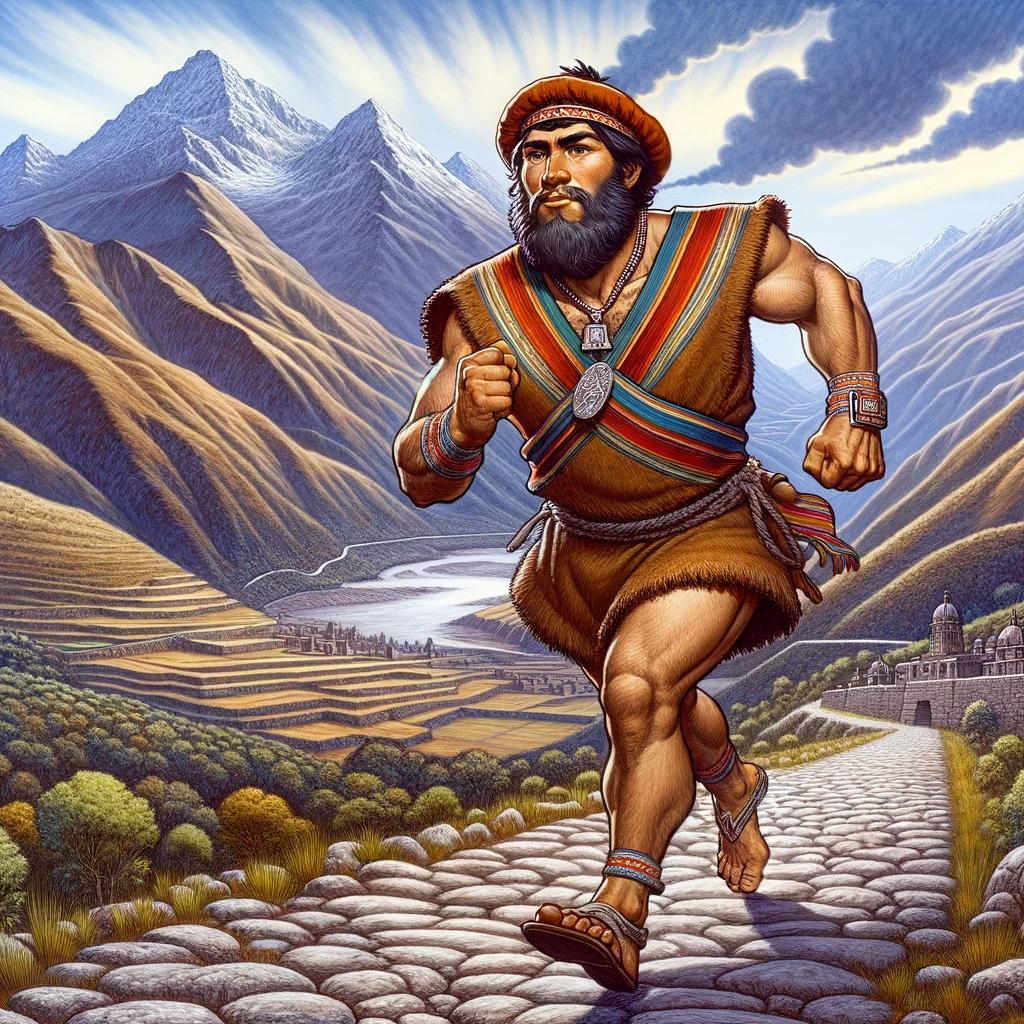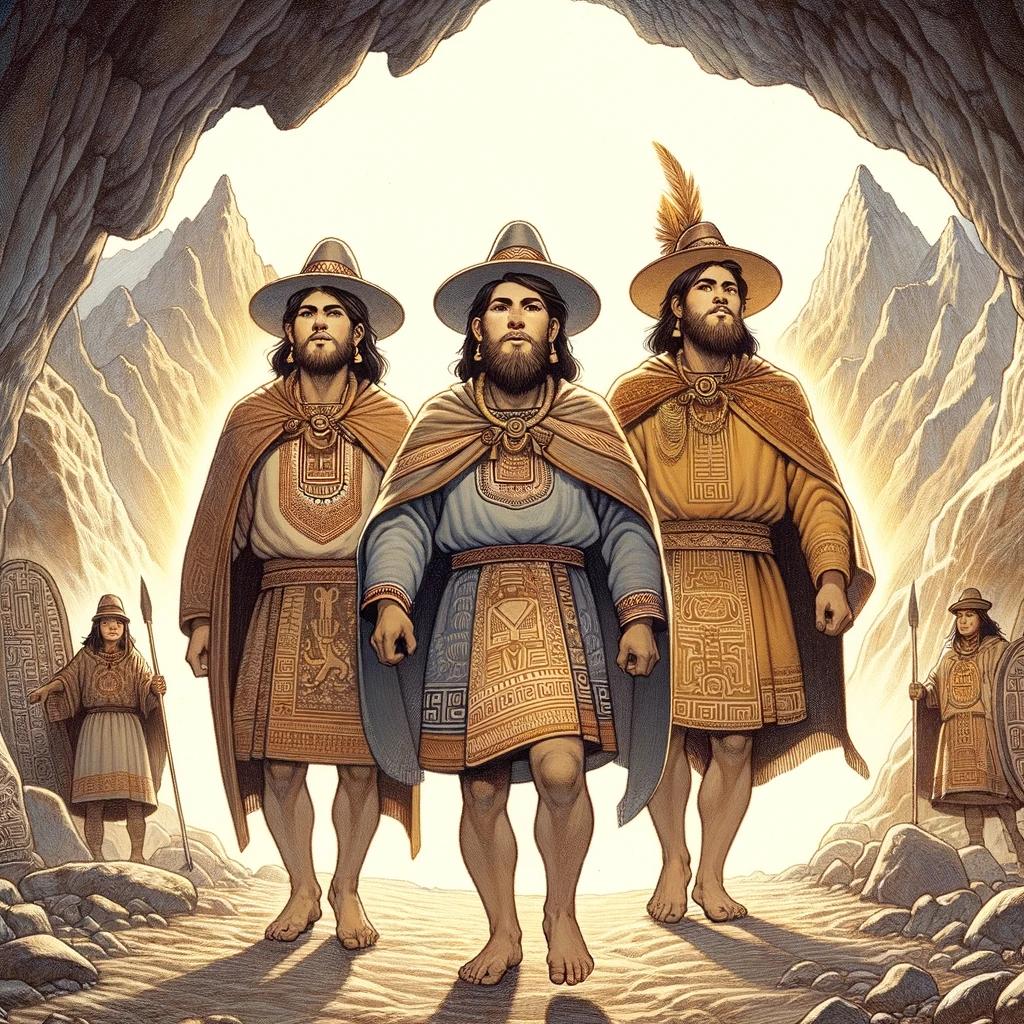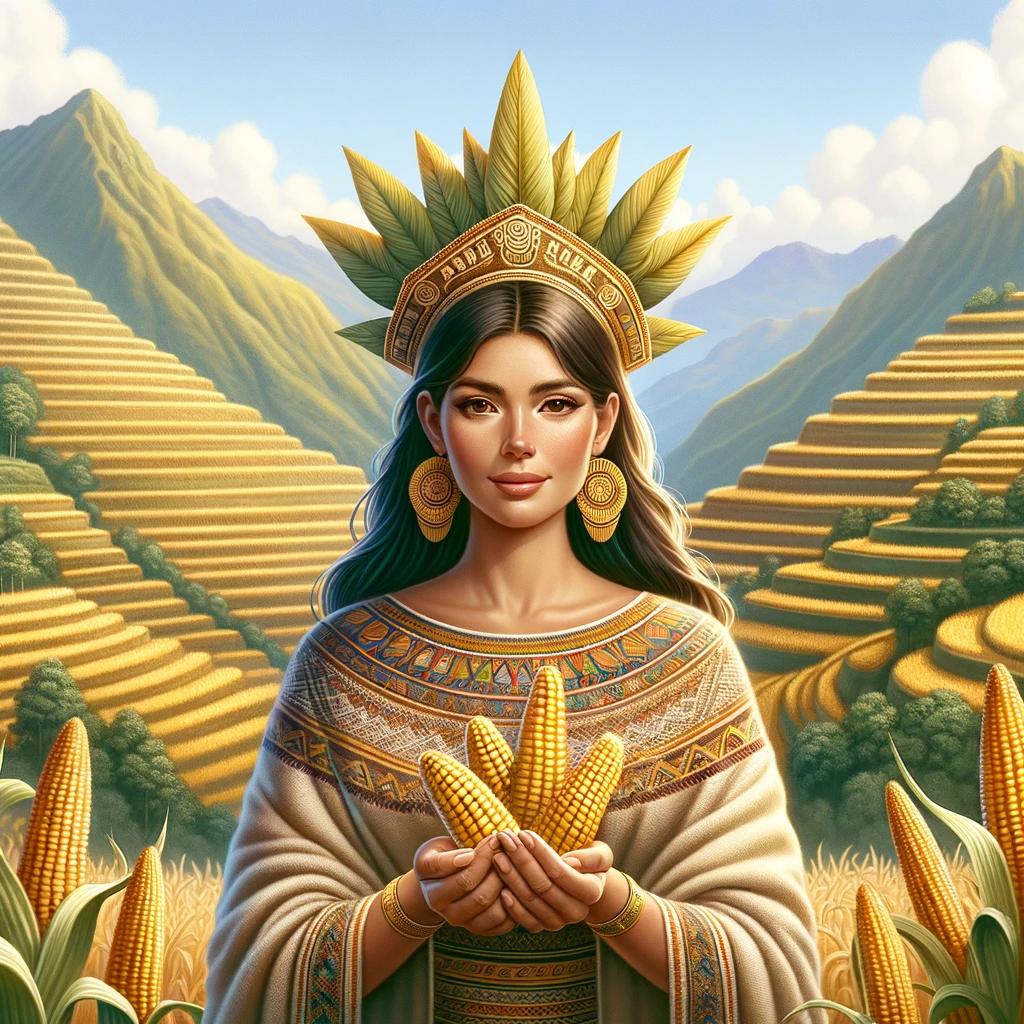Apu Illapu: The Inca God of Rain and Agriculture
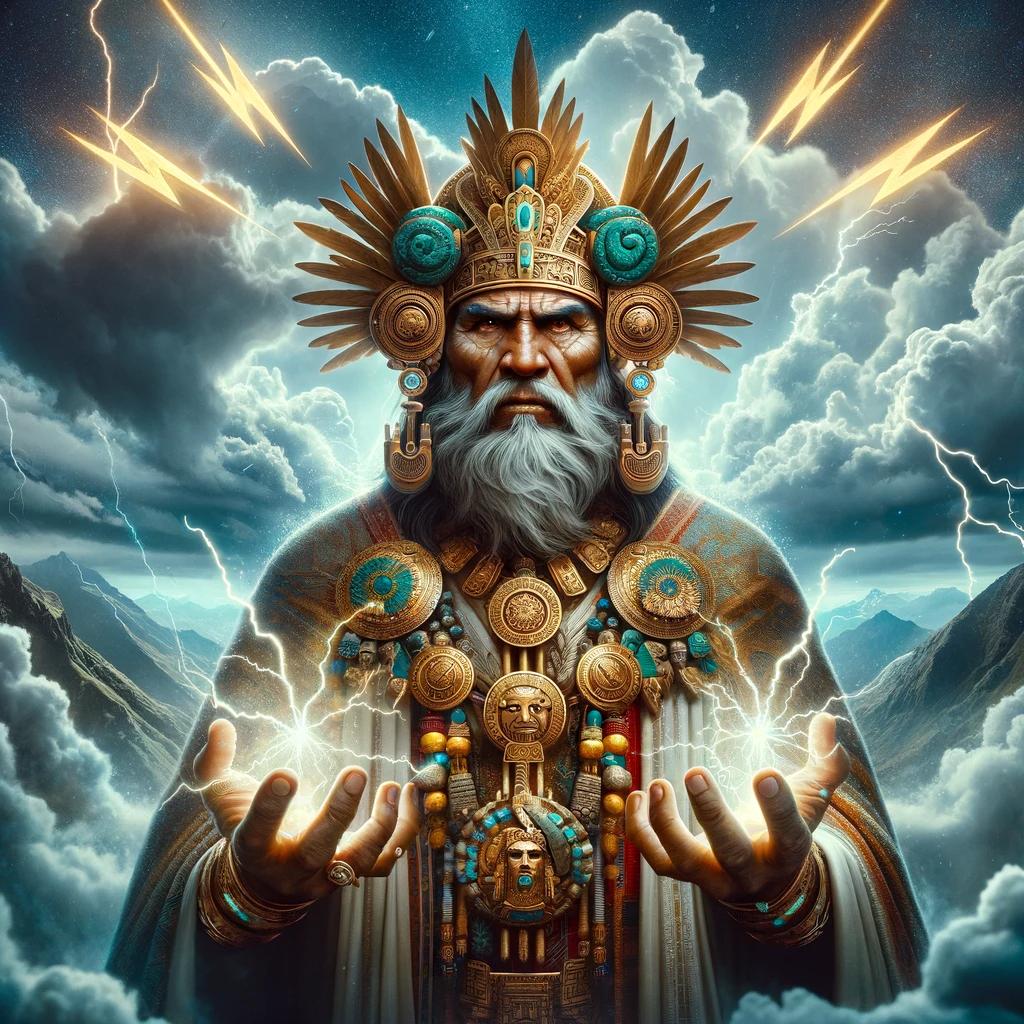
Apu Illapu is an important deity in the ancient Inca religion. As the god of rain, he held a significant role in Inca cosmology and agriculture. Legends and stories surrounding Apu Illapu depict his connection to the harvest and his influence on the fertility of crops.
Worshippers offered prayers and sacrifices to appease this powerful god, and temples dedicated to Apu Illapu were considered sacred sites. The Inca civilization revered Apu Illapu and incorporated his symbolism and rituals into their daily lives.
This article explores the mythology, worship, and legacy of Apu Illapu in Inca society.
The Mythology of Apu Illapu
Apu Illapu, the revered god of rain, holds great significance in Inca mythology. Legends and stories surrounding Apu Illapu depict his vital role in the natural world and the lives of the Inca people.
Legends and Stories Surrounding Apu Illapu
One popular legend tells of Apu Illapu as the bringer of rain, vital for the prosperity of crops and the well-being of the Inca civilization. The myth recounts how Apu Illapu controlled the weather through his sacred abode in the high mountains.
It was believed that the god’s blessings and benevolence were necessary for a bountiful harvest.
Another tale speaks of the struggle between Apu Illapu and his adversary, a drought-causing demon. This myth emphasizes the god’s power over climate and the significance of his intervention to ensure ample rainfall for the Inca’s agricultural endeavors.
The Symbolism and Representation of Apu Illapu
In Inca cosmology, Apu Illapu’s representation as the god of rain symbolizes fertility, abundance, and the cyclical nature of life. The deity’s association with precipitation and the life-giving properties of water epitomized the Inca’s deep connection to the natural world.
Apu Illapu was often depicted with a headdress adorned with raindrops or clouds, emphasizing his association with rain. This symbolically linked him to the agricultural cycle and the vital role he played in the sustenance of the Inca society.
The god’s presence in artwork and rituals served as a reminder of the dependency on his divine powers and the abundance he brought forth.
Inca mythology revered Apu Illapu as a cosmic force, intertwining the physical and spiritual realms through his control over rainfall and agricultural prosperity.
Apu Illapu in Inca Cosmology
In Inca cosmology, Apu Illapu played a significant role, closely tied to the fundamental aspects of rain and agriculture. The Inca people believed that rain was vital for the well-being of their society, as it was necessary for the growth of crops and the overall sustenance of life.
The Cosmological Importance of Rain in Inca Beliefs
Rain, seen as a divine gift from the gods, held great cosmological significance in Inca beliefs. It was considered a blessing and a source of life, connecting the earthly realm with the spiritual.
The Inca believed that Apu Illapu controlled and bestowed rain upon the world, making him an essential figure in the cosmological order.
Rain was viewed as a powerful symbol of fertility and abundance, representing the prosperous cycle of life.
The Inca understood that without sufficient rainfall, their crops would wither, and their society would suffer. Therefore, the worship of Apu Illapu was crucial in ensuring a thriving agricultural system and sustaining the welfare of the people.
Apu Illapu’s Connection to Agriculture and Harvest
Apu Illapu’s connection to agriculture and the harvest was deeply rooted in Inca society. As the god of rain, he played a vital role in the growth and success of crops, making him highly revered by the agricultural communities of the Inca empire.
The Inca farmers understood the significance of rain in their agricultural practices. They believed that Apu Illapu’s benevolence and control over rain were essential for producing bountiful harvests. They offered prayers and performed rituals to honor Apu Illapu and plead for his favor, ensuring prosperous crops and food security for their civilization.
The Inca’s strong connection to the land and agricultural practices stemmed from their beliefs in the interconnectedness of nature and spirituality. By recognizing Apu Illapu’s role as the provider of rain, the Inca cultivated a deep reverence for the natural world and the gods associated with it.
In conclusion, Apu Illapu held a prominent place in Inca cosmology, embodying the crucial elements of rain and agriculture. The Inca revered Apu Illapu for his control over rainfall, viewing it as a divine blessing that sustained their society’s well-being and ensured successful harvests.
This sacred connection between Apu Illapu, rain, and agriculture showcased the intricate belief system and the profound respect the Inca held for the natural world and its deities.
Worship and Rituals Surrounding Apu Illapu
The worship of Apu Illapu, the Inca god of rain, was an integral part of Inca religious practices.
Devotees engaged in various rituals and offered prayers and offerings to seek his blessings for abundant rainfall and prosperous crops.
Prayers and Offerings to Apu Illapu
Prayers to Apu Illapu were offered by farmers and agricultural communities, who relied on his benevolence for successful harvests. They believed that through these prayers, they could establish a connection with the deity and express their gratitude and devotion towards him.
- Prayers often emphasized the essential role of rain in nurturing crops and sustaining livelihoods.
- Offerings such as food, coca leaves, and chicha (corn beer) were presented to Apu Illapu as a gesture of reverence and gratitude.
- These offerings were believed to please the god and ensure his favor, resulting in abundant rainfall and fertility of the land.
Pilgrimages and Sacrifices in Honor of Apu Illapu
Pilgrimages were undertaken to sacred sites and temples dedicated to Apu Illapu as a means of deepening devotion and seeking his blessings.
These journeys were often made during times of drought or in anticipation of the agricultural season.
- Pilgrims embarked on arduous journeys, often traversing challenging terrains, to reach these sacred sites.
- Sacrifices, both animal and occasionally human, were offered during these pilgrimages as a powerful demonstration of devotion and commitment to Apu Illapu.
- These sacrifices were seen as acts of reciprocity, aiming to appease the god and reestablish balance and harmony in the natural world.
Through prayers, offerings, pilgrimages, and sacrifices, the worship of Apu Illapu played a vital role in the spiritual lives of the Inca people.
It was a way for them to express their deep connection with the natural world and seek divine intervention for a bountiful harvest and agricultural prosperity.
Illapu Temples and Sacred Sites
The Illapu Temples, dedicated to the deity Apu Illapu, held immense significance in Inca society.
They were renowned for their unique architecture and design, reflecting the veneration and reverence for this rain god.
The Architecture and Design of Illapu Temples
The Illapu Temples were constructed on elevated structures, showcasing the awe-inspiring craftsmanship and engineering skills of the Inca civilization. These temples were strategically located in areas that allowed for a commanding view of the surrounding landscape, symbolizing the connection between Apu Illapu and the heavens.
The architecture of Illapu Temples featured intricate stonework, incorporating massive stone blocks meticulously carved and fitted together without the use of mortar. This technique, known as ashlar masonry, created sturdy and visually stunning structures that have stood the test of time.
The design of Illapu Temples often included multiple terraces, platforms, and staircases, leading to the central sanctuary where offerings and rituals were performed. These temples were adorned with symbolic motifs, such as water channels representing the flowing rains and fertility brought by Apu Illapu.
The Role of Illapu Temples in Inca Society
Illapu Temples held a crucial role in Inca society, serving as places of worship, pilgrimage, and social gatherings. They were the focal points for the community’s relationship with Apu Illapu, reflecting the deep connection between the agricultural practices and spiritual beliefs of the Inca people.
These sacred sites provided a space for farmers to come together, offering their prayers and offerings to Apu Illapu for abundant rainfall and a bountiful harvest. The rituals performed within these temples were intricately tied to the agricultural calendar and played a vital role in ensuring the prosperity of the Inca empire.
- Farmers would embark on pilgrimages to Illapu Temples during times of drought or impending crop failure, seeking the intercession of Apu Illapu through sacrificial offerings and prayers.
- Sacrifices, both animal and occasionally human, were conducted in moments of extreme hardship or crisis, with the belief that these offerings would appease Apu Illapu and secure his favor.
- Illapu Temples also served as gathering places for important cultural and religious ceremonies, where the community would come together to celebrate and honor the deity of rain.
The Illapu Temples stand as testament to the profound spiritual connection between the Inca people and the forces of nature, highlighting the symbiotic relationship between humans and the divine in their quest for survival and prosperity.
Other Inca Deities Related to Agriculture
In addition to Apu Illapu, the Inca civilization also revered other deities associated with agriculture. These gods and goddesses played vital roles in the agricultural practices and beliefs of the Inca people.
The Cult of Inti: The Inca Sun God
Inti, the Inca sun god, held the utmost importance in the Inca pantheon. As the radiant provider of warmth and light, Inti was deeply revered by farmers for his crucial role in ripening crops.
Represented with a human face on a radiating disc, Inti symbolized the life-giving energy of the sun that was vital for successful harvests.
Mama Quilla: The Inca Goddess of the Moon
Mama Quilla, known as the Inca goddess of the moon, held significant influence over agricultural cycles.
It was believed that Mama Quilla regulated the menstrual cycles of women, and her waxing and waning phases were used to determine the monthly agricultural rhythms and mark Inca festivities.
The temples and sanctuaries dedicated to Mama Quilla were revered sites, including the renowned Templo del Sol in Cusco, temples in Vilcashuamán, and the Island of the Sun in Lake Titicaca.
- The Cult of Inti emphasized the importance of sunlight in agricultural productivity.
- Mama Quilla’s lunar cycles guided Inca farming practices and cultural celebrations.
These deities, along with Apu Illapu, played integral roles in the agricultural traditions and cosmology of the Inca civilization.
Their veneration through rituals, offerings, and the construction of sacred temples contributed to the prosperity and livelihood of the Inca society.
Inca Agriculture and its Connection to Apu Illapu
Inca society heavily relied on agriculture for sustenance, and the connection between agriculture and the god Apu Illapu was significant. The Inca people recognized the vital role of rainfall, which was believed to be controlled by Apu Illapu, in their agricultural practices.
The Importance of Rainfall for Inca Agricultural Practices
The Inca civilization depended on rainfall for successful crop cultivation. Rainfall allowed their terraced fields, known as “andenes,” to thrive and produce bountiful harvests. The Inca farmers understood the importance of balanced rainfall for proper irrigation and soil fertility.
- Precise irrigation: Inca farmers were skilled at managing water flow through elaborate canal systems to deliver water to their fields as needed.
- Preventing drought and excess rain: The Inca people recognized that both drought and excessive rainfall could be detrimental to their crops.
They closely observed weather patterns and sought the favorable intervention of Apu Illapu through rituals and offerings.
- Water management: The Inca built sophisticated stone channels and tanks to collect and distribute water across their agricultural terraces.
The Ritualistic Use of Lunar Cycles in Inca Farming
Besides relying on rainfall, the Inca people also made use of lunar cycles to guide their agricultural practices.
The moon, personified as Mama Quilla, played a crucial role in determining the best times for planting, harvesting, and other agricultural activities.
- Lunar calendar: The Inca developed a lunar calendar that captured the waxing and waning phases of the moon.
It served as a guide for planning agricultural tasks.
- Planting and harvesting rituals: Inca farmers would align their planting and harvesting activities with specific lunar phases, believing it would enhance their yields and benefit from the lunar energy.
- Moon observation: The Inca observed the moon’s cycles closely, using its patterns to synchronize their agricultural activities and ensure the optimal growth and productivity of their crops.
Overall, Inca agriculture was intrinsically linked to the worship of Apu Illapu, the god of rain.
The Inca recognized the importance of rainfall and the lunar cycles in their agricultural practices, and they integrated elaborate rituals and offerings to Apu Illapu and Mama Quilla into their farming life.
This harmonious connection between religion and agriculture contributed to the success and prosperity of the Inca society.
The Legacy of Apu Illapu in Inca Society
Apu Illapu, revered as a cultural hero and divine protector, left an indelible legacy in Inca society. The Inca people deeply revered Apu Illapu for his role as the god of rain, essential for agricultural prosperity.
His influence extended beyond agriculture, shaping various aspects of Inca art, traditions, and festivals.
Apu Illapu as a Cultural Hero and Divine Protector
Apu Illapu held a revered status as a cultural hero among the Inca people. As the god of rain, he was believed to wield significant power over agricultural outcomes. The Inca society viewed Apu Illapu as a benevolent force, protecting their crops from droughts and ensuring bountiful harvests.
His role as a divine protector elevated his status as a symbol of hope and prosperity for the Inca civilization.
Apu Illapu’s Influence on Inca Art, Traditions, and Festivals
Apu Illapu’s influence permeated through various artistic expressions, traditions, and festivals in Inca society. His representation could be found in intricate artwork, showcasing the deity’s association with rain and agriculture. These artistic depictions served as a constant reminder of the vital role Apu Illapu played in the livelihood of the Inca people.
- The Inca people incorporated rituals and ceremonies dedicated to Apu Illapu into their cultural traditions. These rituals involved offerings, songs, and dances performed to honor and appease the god of rain.
- Festivals held in Apu Illapu’s honor celebrated the abundance brought by his blessings.
These vibrant celebrations showcased the Inca people’s gratitude for a successful harvest and their deep connection to the natural world.
- Apu Illapu’s presence was also felt in the agricultural calendar of the Inca civilization.
The timing of planting and harvesting revolved around his divine influence, ensuring optimum conditions for crop growth and sustenance.
The enduring legacy of Apu Illapu in Inca society is a testament to the importance of rain and agriculture in their worldview.
As an integral part of their religious beliefs and cultural practices, Apu Illapu continues to be celebrated and revered as a symbol of fertility, abundance, and the interconnectedness between nature and human existence.
Interactions and Influences: Apu Illapu in World History
The Spread of Inca Religion and Influence Beyond the Andes
The impact of the Inca religion reached far beyond the Andes, as their beliefs and practices spread to various regions. Through trade networks and conquests, the Inca Empire expanded its influence into neighboring territories, sharing their cosmology and religious traditions.
The dissemination of Inca religious ideas led to the assimilation of local deities and belief systems, resulting in a syncretism of cultures. This blending of spiritual practices transformed the religious landscape and contributed to the spread of Inca religious influence.
The Impact of Inca Cosmology on the Spanish Conquest
When the Spanish conquistadors arrived in the Andean region, they encountered a complex society with a rich religious tradition that included the worship of Apu Illapu. The clash between the Inca religion and Catholicism played a significant role in the conquest and colonization of the Inca Empire.
The Spanish sought to convert the indigenous population to Catholicism, considering their indigenous beliefs as pagan and idolatrous. The suppression of Inca religion, including the worship of Apu Illapu, resulted in the destruction of temples and religious artifacts.
However, despite the efforts to eradicate Inca cosmology, some elements of Inca beliefs and practices survived within the Indigenous population. The syncretism between Inca religion and Catholicism, known as “folk Catholicism,” allowed for the preservation of certain Inca deities and rituals.
The legacy of Apu Illapu and Inca cosmology can still be seen today, as it continues to influence the cultural practices and beliefs of the Andean people.
.











